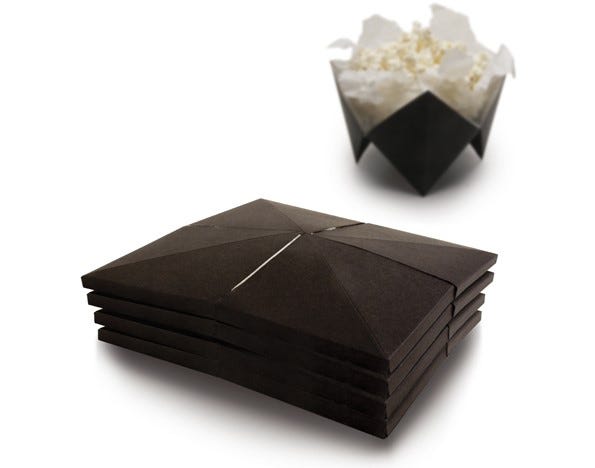Stealing like an artist — design heuristics in creative ideation
Mental shortcuts and cognitive frameworks aren’t only useful in everyday judgments and problem-solving. When faced with creative challenges, we can also tap into our “design brain” to channel previously encountered ideas into our own work.
At their core, design heuristics are the combination, exploration, or transformation of often already existing ideas. Putting a unique spin on these tends to give rise to fresh solutions and approaches, but when you are left without a flow of inspiration, it can pose one mighty challenge to get out of a rut. Still, there are a set of crafty methodologies you can lean on when craving to get unstuck.
Innovative design ideas often come from unpredictable sources, and sometimes it can feel like pot luck, for better or worse. Meanwhile, chalking them all up to the gradual, iterative steps of concept-brewing would also be selling our muse short. Creativity can seem elusive and impossible to tame altogether, but where there is a willingness to get one’s hands dirty, there is a spark of inspiration hidden in the process.

Core strategies
In 1990, researcher Margaret Boden identified three methods that could be used to nudge our mind towards building imaginative and novel products.
In combinational creativity, ideas arise from unusual combinations or by associating elements of familiar concepts. Exploratory creativity is the process of searching through an existing area which is already defined by a set of rules and models. Meanwhile, transformational creativity is the act of reshaping those very rules, creating new techniques by pushing and pulling current norms.
“Creativity is the ability to come up with ideas or artifacts that are new, surprising, and valuable.” — Margaret Boden
Twenty years later, Yilmaz and Seifert introduced a further approach. They encourage dipping into a mental “design space” of all existing possibilities, in order to extract solutions that may otherwise go unexplored. This area of heuristics provides bountiful opportunities for pilfering inspiration, since it acts as a pool of ready-made idea triggers rather than having to rely on old-school brainstorming sessions and simple prompts.
Design driving cognition
When improving the quality and variety of potential works, designers tag cognitive heuristics along for the ride. They apply mental strategies to the problem at hand by reaching for previous design-specific solutions and by rummaging through the options bubbling to the surface. Once they land on a concept, they systematically introduce variations to produce a unique version that carries their own signature style. This strategy is essentially what we call design heuristics.
Designers also appear to have a grasp on more general heuristics that can be applied to different (artistic) situations even without having in-depth knowledge or experience within a domain. To boost, so much as a single heuristic can also result in a myriad of design outcomes depending on how it is integrated. But how do we unearth these mysterious agents of creative sparks?

A DIY method for extracting heuristics
The approach of researchers Yilmaz and Seifert was to derive “principles” or heuristic rules from existing, independent award competitions and related published sources. They analysed submissions of approximately 400 products, distilling key features and major elements by “functionality, form, user-interaction, and physical state.” The next step was to create a breakdown of the needs, the design criteria, and the resulting solution.
Now, let’s stop for a quick disclaimer here. Art is subjective. Heuristic categorisations are subjective. Life is kind of subjective. What the authors of the paper did was check if a specific heuristic can be observed in multiple product designs, and whether it can be used as a springboard for creating further novel ideas.
Taking on Behance, Dribbble or even the good old-fashioned brick-and-mortar museums for design inspiration is probably a method not too foreign to many. What the authors of this study did was offer an analytical and detailed library of frequently appearing concepts; effectively a cheat sheet for your own studies. As a result, their grand project revealed no less than 40 types of heuristics you can apply to your own work.

Defining evidence-based design heuristics
On a wider level, these findings can be organised into content-independent heuristics, such as addition, removal, distortion, orientation, and substitution. But the researchers of this study found these to be a bit too vague, so they took these concepts further by breaking them down into context-dependent heuristics.
This specialised sub-segment is what aids and tailors the heuristics to the task or brief at hand. In their example of a playground stool, “twisting forms to create a playful look” refers to the distortion of the form [content], and the design criteria would be an audience of children [context].
More specific heuristics basically serve different needs in that some add functionality, others suggest using fewer resources, improving visual consistency, using less space, or forming relationships between the design elements. These mental shortcuts don’t just aim to transform ideas, but also consider which would be the most advantageous for the project you are working on.
An example: functional packaging
It may help to go through a short example (and benefits) of a defined heuristic extracted in the study. The use of packaging as a functional element of the product is one highlighted case, and the study goes on to detail how packaging could serve to support the structure (allowing the product to stand) or to be integrated into the product itself.
Whilst the authors provide their own example, I’m decidedly running in another direction that caters for the foodies and the sustainability-focused, as well.
According to Ipsos, purchase decisions of seven out of ten (72%) American consumers are influenced by the packaging design, and way over half (67%) are concerned about the materials used. The vast majority also agree that cardboard packaging can be innovative, allowing for more creative packaging decisions over other materials. With sustainability being the keyword in environmentally conscious choices, herein lies the opportunity to listen to your target audience’s needs whilst also serving a greater good.

All this being said, Eurostat figures show that between 2009 and 2019 we have still generated more waste compared to our growing tendency to recycle. In other words, we may be getting greener, but that improvement does not match our increased garbage output. Perhaps one solution could be (you guessed it), to integrate the packaging from the beginning.
One of my favourite examples is a pop-up popcorn bowl designed by Anni Nykänen of Packlab at the Lahti Institute of Design in Finland. She created a slick container that fits into your microwave, which then extends into a bowl as the kernels pop in their mouth-watering dance, and start to demand more space.
Apart from not having to move all the crunchy goodness into another bowl (saving you effort and time), it also serves as a stylish origami-inspired alternative, which can stand on its own four legs. Literally. Who doesn’t love a multi-functional product that makes life easier and tastier?

Though food contamination could spoil the cardboard element, rendering it unfit for recycling in some cases, wrapping the kernels into a greaseproof sheet as shown in the image might help with this. A good look at the bigger picture can help identify sneaky pitfalls early in the process, rather than letting them trip you up at an unsavoury time.
Listing context-dependent heuristics
When creating a set framework for design heuristics, Yilmaz and Seifert summarised them all into a list by counting the 40 types identified within the 400 products analysed, and then ranking them by how often they appeared.
The top twenty context-dependent heuristics that were most often observed are as follows:
1) Remove the moving parts to minimize potential breakdowns.
2) Adjust functions according to different demographic needs.
3) Refocus on the core function of the product.
4) Apply an existing mechanism in a new way.
5) Adjust functions by moving the product’s parts.
6) Reduce the amount of material needed for the same function.
7) Animate product using human features for an approachable look.
8) Change the context of where and how the product will be used.
9) Convert into modular units by repeating or splitting elements.
10) Implement characteristics from nature within the product.
11) Replace materials with recycled ones.
12) Change physical approaches to the system (from front to side)
13) Hide / Collapse / Flatten elements not in use by nesting elements.
14) Merge the functions that can use the same energy source.
15) Use human-power as the energy source.
16) Attach the product to an existing item as an additional component.
17) Make the individual parts attachable and detachable.
18) Minimize steps in use by creating a hierarchy of the features.
19) Convert two-dimensional materials into three-dimensional.
20) Visually separate primary functions from secondary functions.
For a full listing, you can read the research paper here.

What next?
If you are wondering which heuristics to apply, the answer depends highly on the problem context and your preferences, to start with. Each type requires specific features in order to be a fitting match, but overall there is no magic bullet that will lead to the best solution.
Success in idea generation can likely be defined by the number and variation of concepts you come up with, which you can then wade through, selecting and refining ideas that best suit your needs. Design heuristics offer stepping stones to get you started, but how you tailor elements to your own creations is a very personal affair. Hopefully, by taking inspiration from previous giants and current contemporaries alike, you can find a way out of any hazy creative block.
But if all fails? Go for a walk. Maybe you just need a break and some fresh air; there’s no need to overthink everything.
Thanks for reading! ❤️
If you liked this post, follow me on Medium for more!
References & Credits:
- Most Americans Say That the Design of a Product’s Packaging Often Influences Their Purchase Decisions by Ipsos
- Packaging waste statistics by Eurostat
- Pop-Up Popcorn Bowl: The Future Of Microwave Popcorn by CoolThings
- Boden, M. (1990). The creative mind George Weidenfeld and Nicolson Ltd. Great Britain.
- Yilmaz, S., & Seifert, C. M. (2010). Cognitive heuristics in design ideation. In DS 60: Proceedings of DESIGN 2010, the 11th International Design Conference, Dubrovnik, Croatia (pp. 1007–1016).
- Images by pch.vector on Freepik
Stealing like an artist — design heuristics in creative ideation was originally published in UX Collective on Medium, where people are continuing the conversation by highlighting and responding to this story.